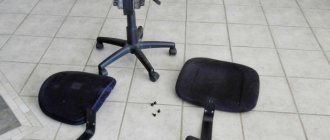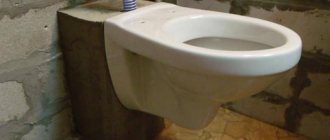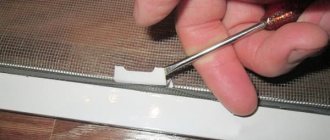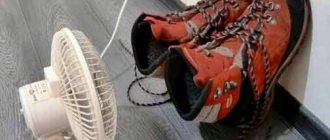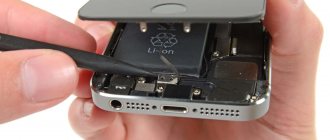Mesh fabric is a traditional element of many branded sneakers, especially summer, running, and for indoor activities. The material is durable, but still not as strong as leather or special fabric from which shoe uppers are sewn. Therefore, sneakers with mesh are more vulnerable to mechanical damage, and an unsightly hole in the mesh fabric instantly turns your favorite shoes into a throwaway product.
But is everything so irreparable, or, if the mesh is torn, can you repair the sneakers yourself? The answer is clear: you can! Moreover, there are a lot of ways.
General recommendations
When planning to restore sneakers, you need to take into account that different models differ in the materials used to make sports shoes. Depending on the material, the nuances of further repairs depend. The main task of the work is to update shoes and maintain proper appearance. Without going to a workshop, you can easily glue or extend the sole, whiten the visible part of the products, and eliminate small cracks.
The toe of a sneaker is most susceptible to wear and external influences, which is why tears most often form on it. The toe section is constantly in need of repair due to increased load, so the restoration of this element should be approached with great responsibility.
Even if worn and handled carefully, sneakers will wear out faster than other shoes, especially when used for sports. Prolongation of operation is facilitated by timely repairs and compliance with preventive care measures. This reduces costs compared to purchasing a new pair of sports shoes.
DIY tread repair
The most vulnerable are the protectors located on the heels of shoes. To restore them, you will need a hard piece of rubber, which can be taken from the sole of unnecessary shoes. Among the tools and additional devices that will be useful for work are: shoe glue, a sharp knife, and coarse sandpaper. The tread repair process is as follows:
- A patch is cut out of a piece of hard rubber and fitted in place of the damaged or worn out tread.
- Using a knife and sandpaper, make a wedge-shaped patch.
- The surfaces that will be glued are treated with sandpaper to roughen them, and then wiped with a solvent and allowed to dry.
- The adhesive composition is applied in two layers to the patch and the future location of the protector. The drying time of the first layer should be about 20 minutes, the second - 4-6 hours.
- After the glue has dried, the surfaces are heated over the stove until a smell appears, applied to each other, squeezed tightly and held until cool and fixed.
Sneakers with retreads can be worn immediately after the repair is completed. If possible, it is recommended to wait a day before use to provide additional reliability.
See also
What is the best way to seal cracks in laminate flooring, choice of products and repair instructions
How to repair heels
To repair heels on sneakers, you need to get rid of the old tread, tearing it off the sole, cutting it in places where it is impossible to separate the element manually. To simplify the task, you can treat problem areas with a solvent.
After removing the tread, the contour of the sole is transferred to thick paper or cardboard and the erased edges are completed. Having drawn the outline, the pattern is cut out of paper and used to create a new blank. You can make the sole from a rubber mat, which is sold in hardware stores. It is impractical to partially restore the sole, so if the heel of the sneakers is damaged, the base is completely changed.
When gluing the sole to the main part of a sports shoe, you need to thoroughly clean the surface. Otherwise, the gluing procedure does not differ from the standard one.
Reanimation of running shoes
One of the pressing topics for running enthusiasts, especially athletes who spend a significant amount of time training and perform impressive running volumes, plus on surfaces that are far from ideal, is the wear and tear of running shoes. When the sneakers have not served their intended life and have not yet reached the mileage declared by the manufacturer, while retaining most of their performance characteristics, problems may arise with them, in the form of worn mesh in the toe, worn out sole and worn out heel counter in the heel area. They arise due to the anatomical features of the athlete’s foot, his weight category, incorrectly selected size and category of sneakers, as well as the specifics of running technique.
How to repair the top
The features of repairing the upper part of the sneakers directly depend on the material used. If shoes are made of suede, natural or artificial leather, then the material wears out over time and cracks at break points. To restore the appearance, patches made of thin and elastic material can be glued or sewn onto cracked and cracked areas. Before applying patches, the old material is torn off.
The use of patches on the upper part of the sneakers ruins the original appearance of the shoes, so it is better to prevent cracks from occurring. To maintain shoes in good condition, natural leather should be periodically lubricated with cream, and suede should be cleaned with a dry, stiff brush, trying to lift the pile. To clean the upper part of your sneakers from dirt, you should use a damp cloth rather than washing your shoes under running water.
What to do if the mesh on your sneakers is frayed or torn
Even the best quality sneakers can tear or become damaged. To avoid throwing away a good pair of shoes, you should try to repair them yourself.
Sew with thread if a small area is torn
You need to take a thread that matches the color of the sneakers and a needle. A needle is inserted into the holes in the mesh and gradually pulls the material until the seam hides the torn area. You need to sew not along the edge of the hole, but a little further, capturing more fabric. This will prevent the shoes from tearing again when worn. When the seam is completed, you need to tie a tight knot and trim off the unnecessary part of the threads.
The seam should be small and tight. This way it will look neater and last longer.
Sole
The quality and condition of the sole affects the comfort when wearing sports shoes. With prolonged use, the sole of the sneakers wears out and becomes deformed. Stepping on stones and unpaved surfaces risks damaging the sole, causing holes to form on it.
How to seal a hole
Any holes in the sole can be repaired in different ways, depending on the base material of the sneakers and the extent of the damage. Most often, epoxy glue is used to eliminate holes, which is relatively affordable and easy to use. Holes on the sole are sealed as follows:
- all edges of the hole are well cleaned and treated with a solvent to degrease;
- when the area next to the defect is completely dry, apply the diluted adhesive composition;
- if the hole in the sole of the sneaker is too large, a fiberglass mesh is placed in it to fill the void;
- when the glue dries, cover the damaged area from the outside with masking tape to level the sole;
- The sneakers are left in a well-ventilated area to dry completely.
See also
How to paint lacquered furniture at home without removing varnish
How to increase worn out
If the soft sole of the sneakers has worn down slightly, it can be increased to its original thickness. For this purpose, you will need to purchase microporous rubber. A blank is cut out of the material in the shape of the worn-out element, the surface is cleaned with sandpaper and glued to the shoes.
It is better to use a special kind of shoe glue as glue to ensure reliable adhesion.
Replacement
A sole with a lot of damage is easier to replace with a new one. This will significantly reduce the time spent on repairing each damaged area. The replacement sole, as well as for extension, is cut out of microporous rubber. The sneaker is applied to the cardboard and the outline is outlined, and then it is transferred to the prepared material and the blank is cut out.
The advantage of using microporous rubber to create a new sole is the ability to cut parts into different shapes and sizes. The material can be used to make the sole of the desired type at minimal cost. In addition, microporous rubber has the following performance characteristics:
- light weight, strength and elasticity;
- resistance to rapid erasure;
- anti-slip;
- immunity to various atmospheric phenomena;
- no need for additional processing.
High quality microporous rubber is non-toxic, elastic, and does not deteriorate due to temperature changes and exposure to frost. The material can be produced with different contents of synthetic or natural rubber, which affects the strength and service life. The only negative side of the material for restoring sneakers is the sharp specific smell, but it tends to disappear quickly, so the repaired shoes will not create discomfort.
How to sew patches
Depending on the material from which the upper part of the sneaker is made, a corresponding patch is made. The size of the patch should be slightly larger than the damaged area so that the defect is completely hidden and the likelihood of further rupture is minimal. To fix the patch on the top or side, you need to attach the prepared material to the shoe and sew it with strong threads around the entire perimeter.
Which shoe glue is best?
To seal a broken sole, you need to choose a high-quality adhesive composition. This is difficult to do, since in any store you can find products from dozens of manufacturers. Almost all produced glue is divided into several types that are suitable for a particular material. However, experts recommend buying universal compounds that can stick to any sole.
The highest quality types of glue:
- Desmocol. This adhesive is popular among shoemakers. It allows you to repair shoes made from various materials. You can buy it only in specialized stores at a relatively high price. The product is used sparingly, so one tube is enough for dozens of repairs.
- B7000. This epoxy resin is valued for its versatility and good strength characteristics. The sole sealed with it will not allow water to pass through, which is important for people leading an active lifestyle. The only drawback of the composition is that it takes a long time to dry (about 2 days).
- Moment Marathon. This glue is considered one of the best due to its special characteristics. It has excellent frost resistance and does not lose its properties when in contact with water. Other advantages of Moment include ease of use and quick drying.
- Bonicol. It is considered one of the most popular adhesives in Western Europe. It is used not only for repairing boots, but also for firmly connecting various products. Bonicol is considered an expensive, but effective and economical composition.
- Nairit. This glue is used not only for gluing soles, but also for fixing many other problems with shoes. It is relatively inexpensive, but is not used very economically. Nairit needs at least 3 days to dry completely.
Combination top repair
On sneakers with a combined upper made of synthetic material with foam padding or natural and artificial suede, the fabric most often damaged is in the toe area, where the shoe comes into contact with the toes. On the outside, this area can be protected by a rubber insert around which there is a mesh, which is typical for running models of sneakers.
See also
Causes of bubbles on wallpaper after gluing, what to do and how to fix the problem
If there is minor damage to the front of the shoe, a patch can be sewn on. If there are large holes, you need to prop up the seams, adjust the size and shape of a piece of durable nylon fabric and sew it in place.
Needles
After the hole is formed, the awl is grabbed in the right hand with the little finger. The right needle lies between the middle and index fingers. The left needle, from the wrong side, is threaded through the hole that has just appeared with the left hand.
The right needle is held with the thumb and index finger and placed behind the left needle, forming a cross.
The left needle is now pulled completely out of the hole. The thumb and index finger hold the needle. The ring finger, in the area of the eye of the needle, holds the thread, preventing it from falling out. The index finger and thumb of the left hand straighten the thread, preventing it from tangling as it passes through the hole. When the thread is pulled through, the right needle is threaded through the same hole. The right needle thread lies behind the left needle thread.
How to fix a backdrop
Damage to the back of sneakers manifests itself in different ways: the fabric tears, the inner lining comes out, and discomfort appears in the heel.
When repairing shoes at home, you can take the following steps:
- Carefully cut off the torn edges in the area where the lining is located.
- Select a piece of thin leather that is soft to the touch and cut the blank in the shape of a small horseshoe. This shape is required to cover the entire surface of the heel of the sneaker.
- Treat the leather blank with shoe glue, thoroughly covering the entire surface, especially the edges.
- Carefully apply the patch to the heel of the shoe and place any suitable size object inside the sneaker to spread and press the fabric tightly.
- Leave the shoes for several hours for the final fixation of the patch.
How to reduce the number of cracks
A common cause of cracks in sports shoes is improper use. In particular, defects appear on sneakers due to wearing shoes of a larger size, excessive bending of the foot while wearing, prolonged pressure, exposure to high or too low temperatures.
If you follow the rules for using shoes, cracks will appear on them in a minimal amount.
To reduce the number of damages, it is recommended to use special mold holders, blocks and spacers during storage. It will also be useful to stuff the sneakers with crumpled paper to flatten the shells. Another factor that leads to the formation of cracks is soiled shoes. When a large number of dirt particles accumulate, the number of cracks increases and they grow faster. For this reason, the products should be kept clean.
Why does the mesh wear out and tear?
The vulnerable and short-lived part of sports shoes that often wears out is the mesh. The causes of damage are as follows:
- Features of the legs . Some people's legs have structural features that differ from the standard ones. This could be a protruding toe, a bunion, or an atypical foot shape. Where the foot presses on the shoe more than necessary, the mesh breaks faster.
- Sloppy walking . Sometimes people move quickly, do not look at their feet, often stumble or hit one foot against the other when walking. These actions ultimately lead to damage to the shoes.
- Active lifestyle . Hiking, mountain climbing, and even long walks around the city can take a toll on your sneakers, causing them to quickly lose their appearance.
- Frequent washing . If the shoes are light, you have to clean them almost every day. To prevent regular exposure to brushes and detergents from damaging the mesh, you should use special soft rags, sprays or wet wipes, and it is better to completely wash your sneakers as rarely as possible.
- Accident . No one is immune from small incidents. If a person accidentally stumbles, hits or even touches the mesh with something, it can tear, especially if it is made of thin material.
- Weather . Rain, snow, dirt and other natural factors often negatively affect the condition of the fabric of sneakers. The mesh becomes thinner and wears out faster.
- Sports . Those who love to exercise need to be prepared for damage to their sneakers. Football, volleyball and even running wear out shoes more than walking. In this case, it is better to have a special pair for physical education.
On cheap shoes, the mesh breaks faster, but the high price also does not protect against the risk of damage.
